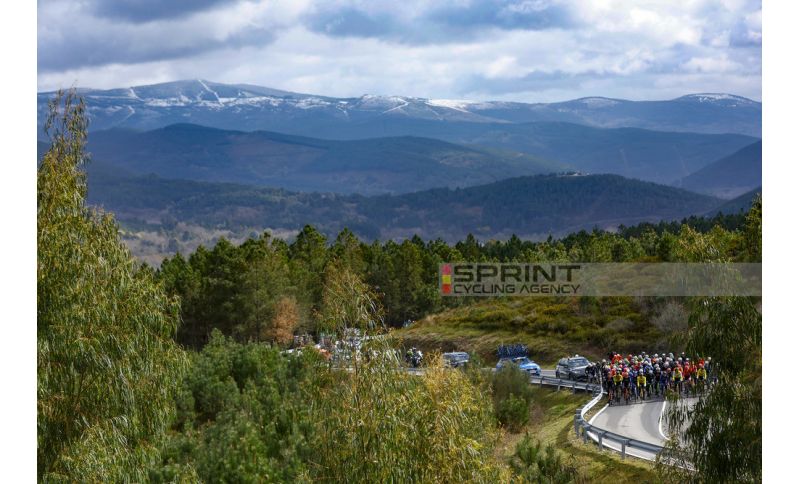

The 2025 edition of the O Gran Camiño will be packed with innovations, taking place from Wednesday, February 26 to Sunday, March 2 in the north-western area of the Iberian Peninsula. This is a land rich in history, scenic beauty, and strong gastronomic interest that the short stage race by Emesports will aim to showcase by touching some of the most famous provinces and tourist locations.
To more concretely achieve this goal, the organizers requested and obtained an increase from four to five racing days compared to the previous three editions. This addition will inevitably make the 4th O Gran Camiño not only the longest (635 total kilometers to cover this year) but also the toughest (nearly 10,000 meters of elevation to digest) of all those previously contested. However, the innovations are not limited to overall distance and altitude, but also involve the start and finish locations chosen by Ezequiel Mosquera (race director) and his team.
With the exception of Santiago de Compostela (where the race returns after the concluding time trial of the 2023 edition), all finish lines and starting locations are new, as are all categorized climbs. Moreover, an important novelty will be the framework for launching the event this year. By expanding its horizons and responding to the desire to create an even more international event, the inaugural stage of O Gran Camiño (also the longest in the race's history at 189.7 kilometers) will take place across the border in Portugal, between Maia and Matosinhos, in the Porto district.
After receiving the embrace of the Portuguese public and archiving the first likely sprint finish, the caravan will move north to rediscover Galicia and more familiar roads. The first to be affected by the race's passage will be those of the Pontevedra province, which will provide the backdrop for the 131-kilometer stage from Marín, which after three 3rd category GPMs (the last of which is 10 km from the finish line), will bring the peloton to the slightly uphill finish in A Estrada. The following day, near Ourense, the only individual time trial will take place, a 15.6 km test to Pereiro de Aguiar where, with the climb to Alto de Sabadelle (4.9 km at 5.7% average) in the middle, non-specialists against the clock might defend themselves admirably.
With the standings reshuffled, the final weekend will definitively determine winners and losers of this edition. In this sense, a first significant shake-up in the rankings could occur on Saturday at O Cebreiro, the finish of a 137.1 km stage that in the last 24 km will propose in quick succession the difficulties of Alto Catroventos (2nd category), Alto a Pitinidoira (1st category), and, 1500 meters from the finish, the 3rd category Alto do Cebreiro (2.8 km at 6.5% average). However, these verdicts will not be definitive because, the next day, the Betanzos-Santiago de Compostela 159.8 km stage could overturn the table not only with the two climbs to Alto de Lampai (3rd category, 5.2 km at 5.4% average) but especially with the six short, treacherous unpaved sections of the Portuguese Way (the second most popular route among those comprising the Santiago Way network) that must be tackled in the two 55-kilometer final circuit laps.
Dust, or mud in case of rain, could therefore, with all the associated risks, create unexpected twists and keep the contest for the yellow jersey exciting and uncertain until the end. In the past two years, Jonas Vingegaard has won by exercising undisputed dominance. This year the Dane, who chose the Algarve to break the ice (by winning), will not be in the race, and therefore the overall victory could be targeted by many contenders. In any case, the winner will be the one who, over the five days, will have best combined explosiveness, bike handling sensitivity, and, no less important, time trial skills.

Se sei giá nostro utente esegui il login altrimenti registrati.